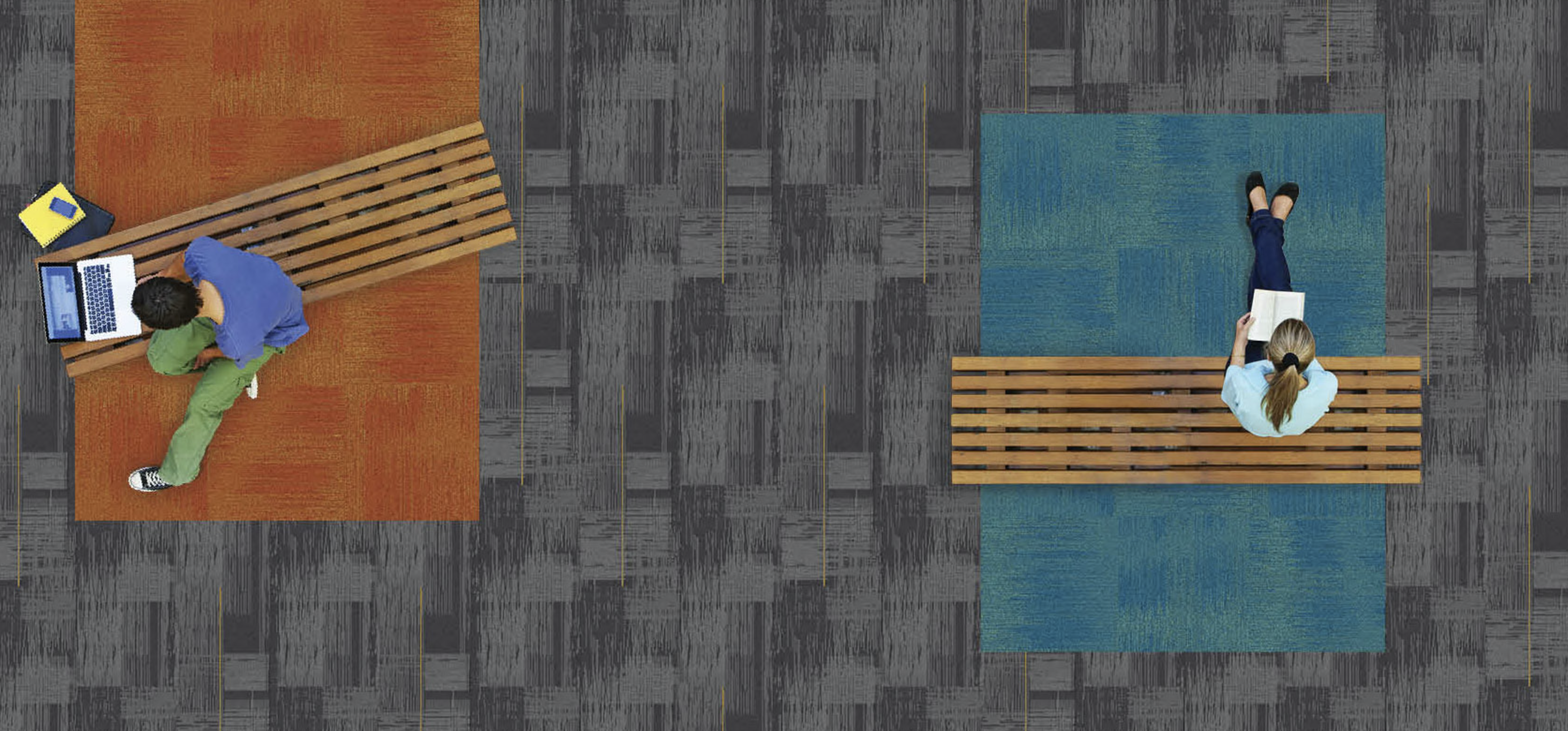Education Is Changing – Here’s How We Are Changing With It – By Angela Lumaye

The Covid-19 pandemic has forced changes in the way several industries operate — and education is no exception. Most classrooms and learning environments that students returned to this year have an entirely different look and feel than those they abruptly left last spring. Yet, teachers and staff are challenged with creating the same level of comfort and safety in their classrooms under wildly different circumstances.

So, what are some of the changes that have been made? What others can we expect? And how can designers and specifiers continue to meet the fundamental needs and missions of both universities and K-12 schools: safe, long-lasting institutions that promote the best possible environment for learning?
Staying Safe—and Getting Creative with Carpet
Most of us have experienced signs and arrows in grocery stores and supermarkets directing traffic in a way that limits exposure to other people. The good news is the method appears to be successful. The better news is there are more creative solutions for designating visual boundaries in ways that are safe, sustainable, and design-oriented. Since the start of the pandemic, our teams at Bentley have been working with our clients to develop wayfinding patterns and solutions to achieve these goals in various projects on campuses throughout the U.S.
To create appropriate social distance without sacrificing aesthetic, designers can combine several carpet patterns and products, colors, and even textures to guide passage or indicate separate learning or social spaces throughout a school’s buildings – cueing circulation and wayfinding and also marking zones for safety. For example, using products and color to designate spaces throughout a classroom could mean that a bright blue area is the teacher’s space and students’ desks sit on orange squares, or two different colors/patterns can symbolize two different sides of a hallway. The bottom-line is, schools are not limited in design options just because they need to adhere to social distancing and other health and safety guidelines.
Making the (Health and Wellness) Grade
I’ve frequently been faced with the popular—yet unfounded assumption—that hard surfaces are healthier alternatives to soft surfaces, like carpet. However, research has proven that well-maintained carpet actually reduces airborne allergens and contributes to improved indoor air quality. I’ve also seen a plethora of evidence and research that points to other health benefits, including psychological ones, that carpet-covered spaces provide, such as the ability to soothe the senses and positively impact our mental and physical health. Who doesn’t need more of that these days!?

That said, there is value in considering specifying a mix of hard and soft flooring options – particularly when it comes to acoustics, cleanability, and performance. Specifically, Luxury Vinyl Tile (LVT) and carpet are increasingly a dynamic duo in schools and learning environments especially with regard to acoustics. For example, the layered construction of Bentley’s 5 mm vinyl acoustic flooring system is designed specifically to ensure quieter learning environments, measured in both sound transmission (STC) and impact insulation (IIC). And when combined, LVT and carpet can provide additional wayfinding and space designations in areas throughout education spaces, from the lobby and offices, to cafeterias, classrooms, study lounges, and everywhere in between.
Clearly, education is changing – and it will continue to evolve. These are just a few solutions education designers can think about as they rethink both the form and function of learning spaces. No matter the design vision, or the health and safety needs, Bentley has the flooring covered.

Angela LuMaye, Director of Education and Public works at Bentley Mills, is a superstar sales rep with a long history of tracking trends in the education market.
